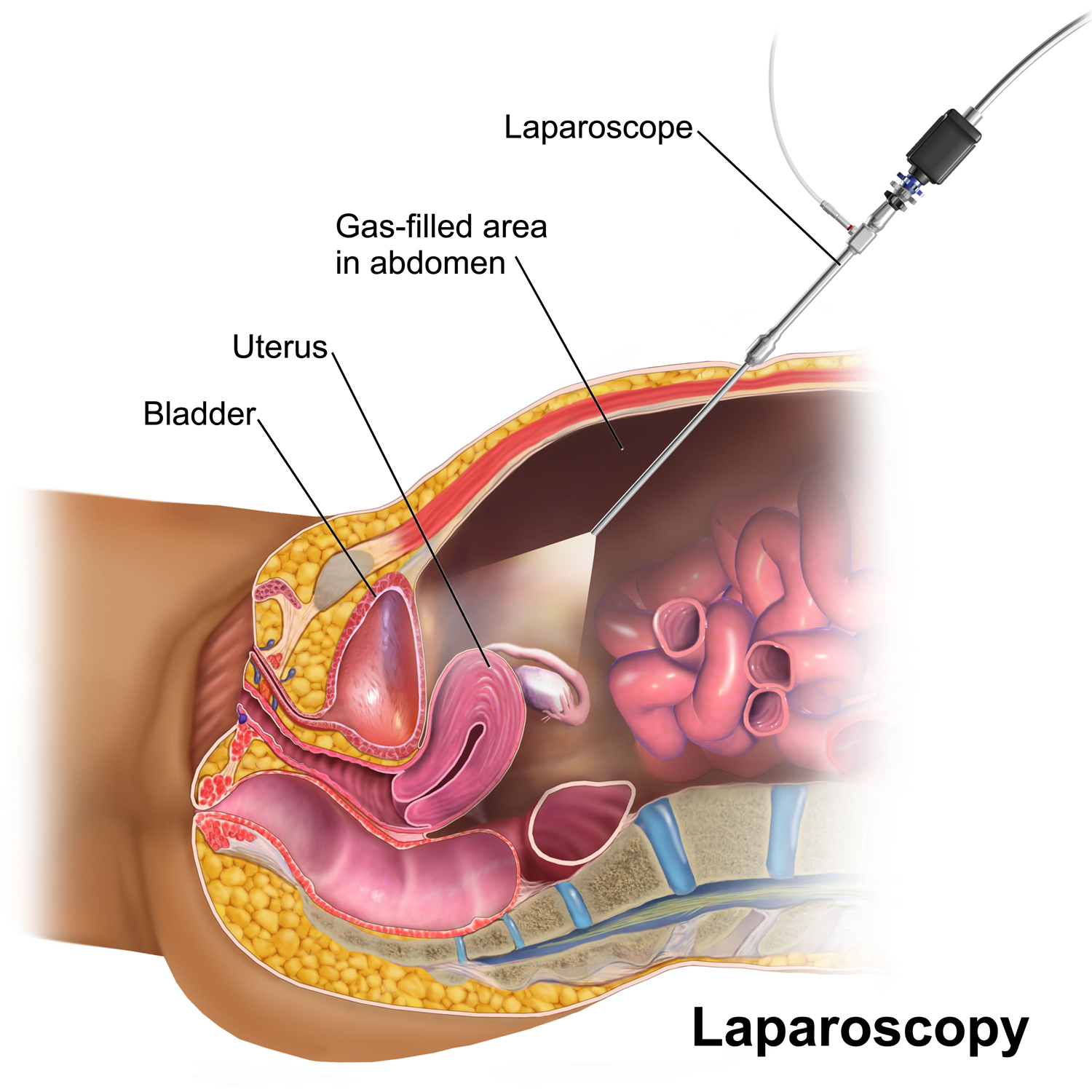Diagnostic Laparoscopy
Diagnostic Laparoscopy for Infertility: Laparoscopy is one of the valuable and very effective diagnostic methods for diagnosing the causes of infertility, and many infertility specialists use it purposefully to evaluate couples' infertility problems. The goal of the gynecological surgeon is to examine the pelvic cavity, uterus, fallopian tubes, and ovaries.
- - Examination of the fallopian tubes: In cases where hysterosalpingography reports fallopian tube obstruction, laparoscopy should be used to confirm it. In this way, a blue-colored substance is pressed into the uterine cavity and then into the tubes by the surgeon's assistant through the vagina and cervix. The gynecological surgeon observes the entry of the colored substance through the monitor from inside the tube, and in this way, both the patency of the tube and the function and mobility of the tube are checked. The adhesion of the tube to the pelvic wall, ovary, or uterus is also observed. In case of severe obstruction of the end of the tube or hydrosalpinx, the tube takes on a sausage-shaped appearance. Ectopic pregnancy or tubal pregnancy can also be easily seen by laparoscopy.
- - Examination of the ovaries: Observing the appearance of the ovary for the presence of cysts, polycystic appearance, small and atrophic ovaries, endometriosis spots on the surface of the ovary, endometrioma cysts, adhesions to adjacent organs, etc., and performing surgical procedures if necessary.
- - Examination of the uterus: If a septate uterus or a bicornuate uterus is shown in the color photo of the uterus, the gynecologist and infertility surgeon will perform laparoscopy to accurately differentiate them. Also, other congenital uterine abnormalities such as a unicornuate uterus and its types, as well as other related problems, can be easily examined by laparoscopy. In these cases, laparoscopy is usually performed along with hysteroscopy.
- - Pelvic cavity evaluation: The pelvic cavity can also be evaluated for adhesions, fluid, and most importantly, endometriosis behind the bladder, pelvic wall, behind the uterus, and on the ovaries by laparoscopy.
Who undergoes diagnostic laparoscopy?
A specialist in infertility and IVF may suggest laparoscopy to you in the following cases during the diagnosis or treatment of infertile couples:
• Unexplained infertility (cases where there is normal sperm, open tubes, and normal ovulation, but pregnancy does not occur)
• Dysmenorrhea and pelvic pain
• Suspicion of endometriosis
• Confirmation of uterine color imaging findings


